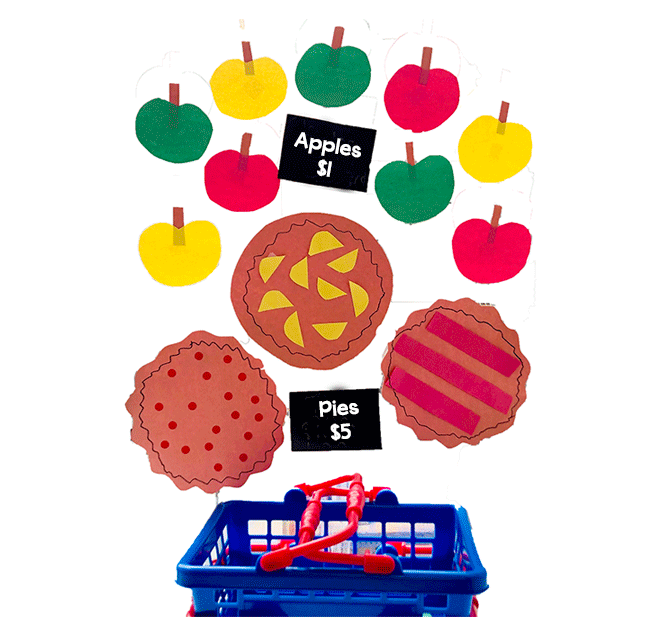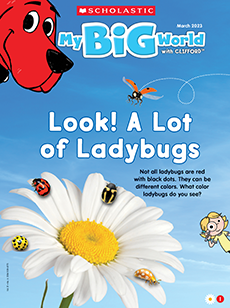Big Red Apple Lesson Plan
What We Are Learning
Science Focus:
apple study
Theme Vocabulary:
stem, skin, flesh, pips
Phonological Awareness:
rhyming
Phonics:
beginning sounds
- Show children an apple, and have them pass it around. Ask what they notice about the outside. Then ask what they will see if you cut into the apple. What will be on the inside? Slice the apple open to show them. Then tell them they will learn more about the inside and outside of apples. background knowledge
Science: Make a Model Apple
Materials: toilet paper tube, white paint, markers, cupcake wrappers, construction paper or tissue paper, glue, brown pipe cleaner or stick, scissor, apple seeds (optional), leaves (optional)
- Have children show what they learned about apple parts by making their own model apples.
- Give each child a toilet paper tube. Have them paint it white. Then have them glue on apple seeds or draw seeds with a marker. This will be the apple core.
- Next, make the outside of the apple. To make the skin, use red or green cupcake wrappers, construction paper or tissue paper. Carefully attach the stem by putting the pipe cleaner or stick through one of the pieces of skin. Then glue one piece of skin to the top of the core and one to the bottom. You can also add leaves to the top of the stem if you’d like.
- When children are done, ask them to point to the different apple parts and tell what they know about them. science vocabulary/art

Materials: construction paper, tape, markers, shopping baskets
- This pretend play activity incorporates art, math, and social skills.
- Choose space in your room to be the apple orchard. Have children make props—like apples, play money, and pies—out of construction paper. Tape “apples” to the wall for them to pick and set up pies in the store. (You can also put real apples on shelves.) Make signs to show how much each item costs. Put out shopping baskets.
- During choice time, let children play in the apple orchard. Some can be customers, and some can be workers. Children can walk around the orchard and pick apples. Then they can pay using pretend money. life skills
